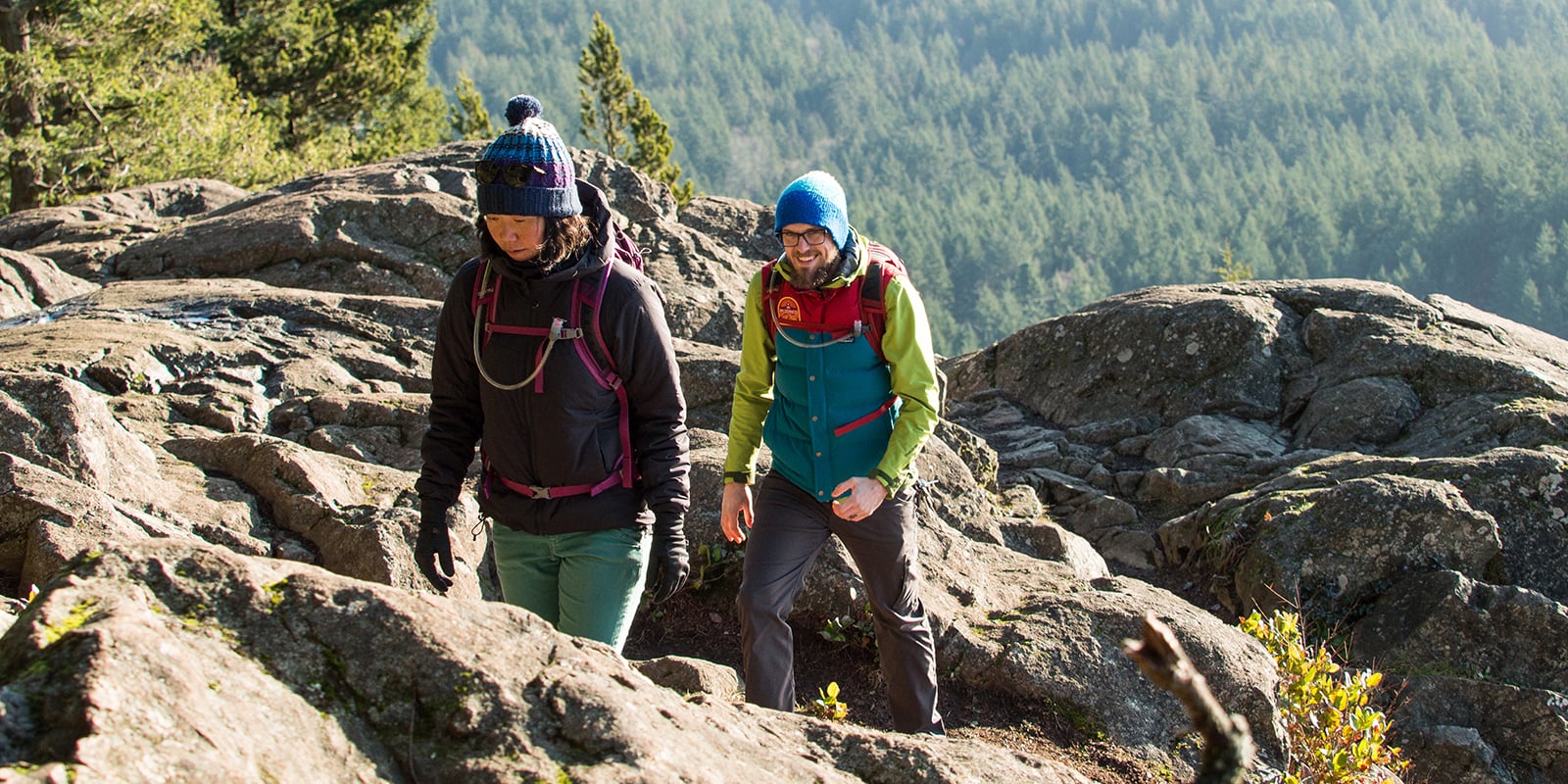If you don’t have much experience with outdoor treks, read this beginner’s guide before lacing up your hiking boots! Inside: what to wear & what to pack.
It’s a no-brainer that hiking is excellent for your health. The benefits include improving your heart health, your balance, and strengthening your muscles. Going on a trek improves your bone density, mental health, and mood.
To fully enjoy a hike, prepare beforehand, especially if you’re a beginner.
The following are seven essential tips to help you get started on your path to greatness.
1. Assess Your Fitness Level
You might be a beginner hiker, but do you practice other outdoor activities or sports?
Stamina and endurance built from other activities can translate over to hiking.
Before heading out on your first hike, assess your fitness level. Different trails have different difficulty ratings.
For example, the United States National Park Service offers some guidelines. The organization multiplies the trail’s elevation gain by two by the trail’s distance in miles. The square root of the product delivers the trail’s score.
The score fits into one of five rankings:
- Easy
- Moderate
- Moderately strenuous
- Strenuous
- Very strenuous
If you head to Lower Yosemite Falls in Yosemite National Park, you’ll hike one of the most popular easy trails. The Maze at Canyonlands, Utah, ranks among the most popular strenuous hikes.
Your first hike should pose a challenge but not discourage you from hiking again.
2. Pick a Place to Hike
Based on your fitness level, pick a place to hike. Take into consideration the season, popularity, and entrance fees.
If you’re testing the waters, hike a local spot. There are plenty of resources online to help you find a trail.
When you’re confident enough to travel, the national parks offer a trail for every fitness level and experience.
Some options include:
- Yosemite National Park
- Zion National Park
- Glacier National Park
Glacier National Park sits in the Rocky Mountains. It consists of trails for every hiking level. Plus, there’s plenty to see, including birds.
Hiking offers you an additional form of physical activity, but on your trek, you’re also going to see nature. If you encounter wildlife, practice sound judgment. But you can still admire raccoons, deer, and sheep from a distance.
Some areas are home to bears, lions, and wolves, so be mindful of your surroundings.
3. Check the Weather
Weather in the mountains remains unpredictable.
For example, if you head out to Albuquerque, New Mexico, to hike the Sandia Mountains, the weather ranges daily. The mornings start cool, and the humidity increases in the afternoon. After lunch, a quick and harsh shower will pass by and clear up within the hour.
Experienced hikers and campers head to the mountains in the summer. The days are warm, and the nights remain mild.
If you want to hike in the winter, pick a place where it’s less likely to snow, such as the desert. Fall hikes in New England tend to be mild and beautiful because you get to see the changing season in the foliage.
4. Pack the Essentials
Every hiker requires the essentials, such as snacks, water, and a first aid kit. From there, your needs depend on how long you plan to hike.
For a day hike, pack a map, compass, multi-knife tool, and sun protection. If the forecast calls for a shower, include rain gear in your pack.
When you’re ready to go on a weekend hiking trip, pack the above essentials, plus a sleeping bag, pad, and tent.
It’s very tempting to overpack. Remember that everything you bring with you, you’re going to carry.
On a first-time hike, keep it simple.
5. Wear Appropriate Clothing and Shoes
Your first hike is a test. Experienced hikers use a short trek to break in new shoes and test new gear.
Besides keeping it simple, keep it comfortable. If you pick a sunny day for your first hike, you need sun protection; you also need appropriate clothing that won’t leave you with a sunburn or odd tan lines.
The right footwear makes or breaks a day outdoors. Several shoe brands sell shoes for hiking. Others specialize in hiking footwear.
Look for shoes that provide stability on uneven surfaces, cushioning, and stiffness. Ideally, water won’t soak through immediately. The best shoes for your feet won’t cause blisters, pain, or tightness.
Your clothing should resist water and sweat too. Additional characteristics include breathable material, lightweight, and durable. Consider pants and long-sleeves with a crew neck.
6. Eat Two Hours Before the Hike
On a day hike, you’re not going to have time or the cookware to whip up a three-course meal. As you test your endurance and fitness level, you don’t want to carry extra weight from gear with you anyway.
So consider eating two hours before the trek.
There are usually chain restaurants and local eateries near the main entrances of well-known hiking trails. You can support the local economy and fuel up before heading out on the trail.
Eggs, oatmeal, and whole-wheat toast are one breakfast option for a morning wander. Yogurt with berries, bagel with peanut butter and banana, or brown rice with vegetables are others.
This is one of those times when it’s OK to increase your carb intake.
7. Invite a Friend
Sometimes you need some alone time. Your first hike may be an effort to unplug from your tech devices and the rest of the world.
Hiking with friends is also fun. You can treat it as an adventure and catch up with each other away from buzzing smartphones and tempting tablets.
You should never hike without letting someone know where you’ll be for the day or weekend. If you head out alone, let someone know. If you head out in a group, someone should know where the group is heading too.
Conclusion
Hiking offers several health benefits; it also provides a great excuse to travel. Chances are there’s at least one hiking trail local to your residence.
Once you gain some confidence and master getting ready for a hike, you can explore trekking spots in other states and around the world. After a while, your experience will also help you gather the best gear, essentials to pack, and additional tips.
[Author Bio]
Caitlin Sinclair is the Property Manager at 7th West at Midtown with five years of property management experience and many more in Customer Service. She shares her passion for her community and looks forward to making 7th West at Midtown the place to call home.










1 Comment
Comments are closed.